If you live in a house for which you are not the first occupant, you often come across traces of the previous residents in the exterior and interior of the house. More than a third of the UK’s housing stock dates back before World War II and, although this is increasingly rare for obvious reasons, every so often you can come across a “time-capsule house” full of clues as to how ordinary people lived more than 80 years ago.
I had this opportunity when, in 1995, I bought a fully furnished semi-detached house in Wolvercote, north Oxford. Built in 1934, the house had been decorated once and never modernised. Little did I know that my experience of the house was to underpin the next 20 years of my career as a design historian.
It turns out that the newly-built house at Rosamund Road had originally been purchased by Vernon Victor Collett (1900-1960) and his wife Cecilia (nee Wells, 1897-1995). They moved into the house with their sons Basil, aged about 13, and Roy, aged about ten. Vernon was a worker at the Wolvercote paper mill on a modest wage. Both Vernon and Cecilia were from solidly working-class backgrounds.
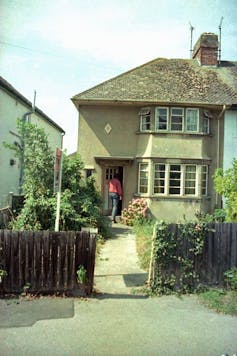
Vernon was the third of six children; his father was a dairyman and his mother a former domestic servant and daughter of an innkeeper. Cecilia was the fourth of five children of a house builder who died young, necessitating his widow to work as a charwoman to support her family. Vernon was the first person in his family to own his own home and is a good example of the kind of person on a modest income who was able to buy a home in the mid-1930s.
This was the most affordable period for home ownership in British history due to falling prices, the availability of compact three-bedroom houses and cheap credit. In 1910, 90% of people rented their homes – by 1939, owner occupation had risen to 31%.
Nation of homeowners
About 20% of the UK’s current housing stock was built before 1914 and an astonishing 17% was built between the wars. Home ownership was facilitated by the interwar house-building boom when nearly 3m houses were built for private sale and more than a million moved from rental to owner occupation. The ideology of Britain as a nation of homeowners emerged along with the desirability of a more home-centred way of life. It is this period that laid the foundations for the popularisation of the idea of the home as central to identity in Britain.
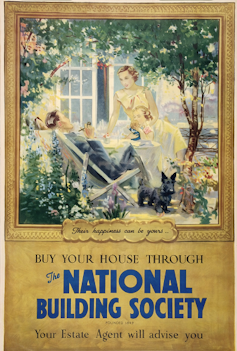
More than a million houses were built by local authorities following the 1919 Addison Act that demanded “homes fit for heroes”: troops that had served in World War I. They were also for the heroines who had undertaken munitions and other war work. These homes raised the standards of house building and set minimum standards for space. Despite being proposed as a solution to slums, they were only affordable for the better-off working classes.
Nevertheless, one Oxford housebuilder responded to this in 1934 by erecting what became known as “Cutteslowe Walls” – two-metre high walls topped with iron spikes – to divide the residents of his private estate from what he termed “slum dwellers” of the local authority estate. Despite years of protests from the council estate tenants, the walls were not finally demolished until 1959.
The Colletts had only two children in contrast to their own families of six and seven children. The small family of two or three children was typical of the respectable working and aspiring lower middle classes in the interwar years who sought to improve their standard of living and was also dictated by the size and number of bedrooms in the typical interwar semi.
From ‘ideal’ homes to ‘real’ homes
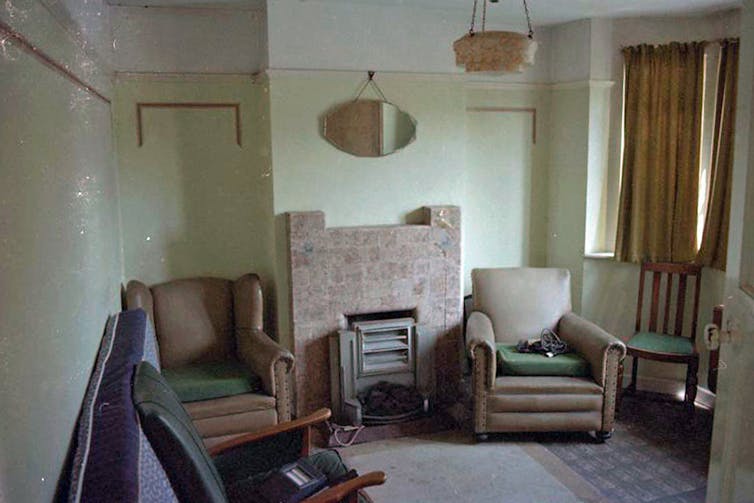
Houses such as Rosamund Road were rarely the riot of Art Deco that some museums would have you believe. In fact, there were remarkable consistencies in UK homes throughout the 20th century with furniture chosen to last and dark paint to hide the grime of everyday life. Fixture, fitting and furnishings often combined different styles and periods. For example, Rosamund Road had imagined historic “Tudorbethan” styles of furniture and “modernistic” linoleum, carpets, paint colours and wallpaper borders in its front reception room, kept for best as a parlour.
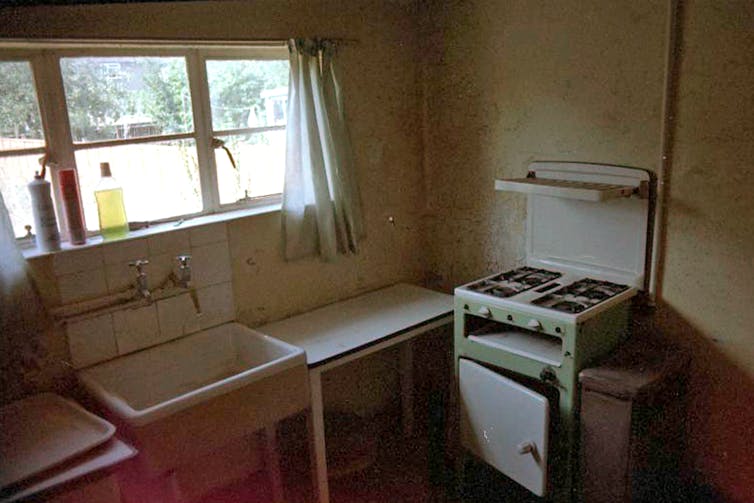
As a former V&A curator, I restored and curated Rosamund Road, living out a 1930s lifestyle. I turned the tiny lean-to “kitchenette” extension into an interwar ideal. It already had a deep Belfast sink accompanied by an enamel top table and a few shelves. I acquired an original 1930s Easiwork kitchen cabinet with storage hidden behind its doors, incorporating a flour hopper and a metal-lined meat safe and a pull-down work surface. This was the precursor to fitted kitchens in Britain, which did not take off until the 1960s.
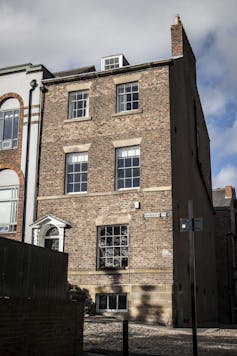
A note of caution about gadgets and electrical appliances. Washing machines and refrigerators may have been available in 1934 but that does not mean their use was widespread. In fact, the most popular appliances were curling tongs and irons. And even in the case of the latter only about a third of households had one in the 1935. If households had income for the luxuries afforded by the convenience of electrical appliances they were more likely to spend it on a wireless – leisure was valued more than saving women’s labour.
Our houses hold the material evidence of their past residents in their bricks and mortar and the walls, floors, mouldings, fixtures, fittings and layout of their interiors. Imagining what they might have looked like and how they have changed through time gives us rich insights into social history.
For anybody who’s delved into family or house history, there is an extraordinary power in standing in the place where an event happened and wondering how the walls might talk. But for me, as an historian of design and everyday culture, the rituals of everyday life that our homes reveal are just as captivating and moving.![]()
Deborah Sugg Ryan, Professor of Design History & Theory, University of Portsmouth
This article is republished from The Conversation under a Creative Commons license. Read the original article.